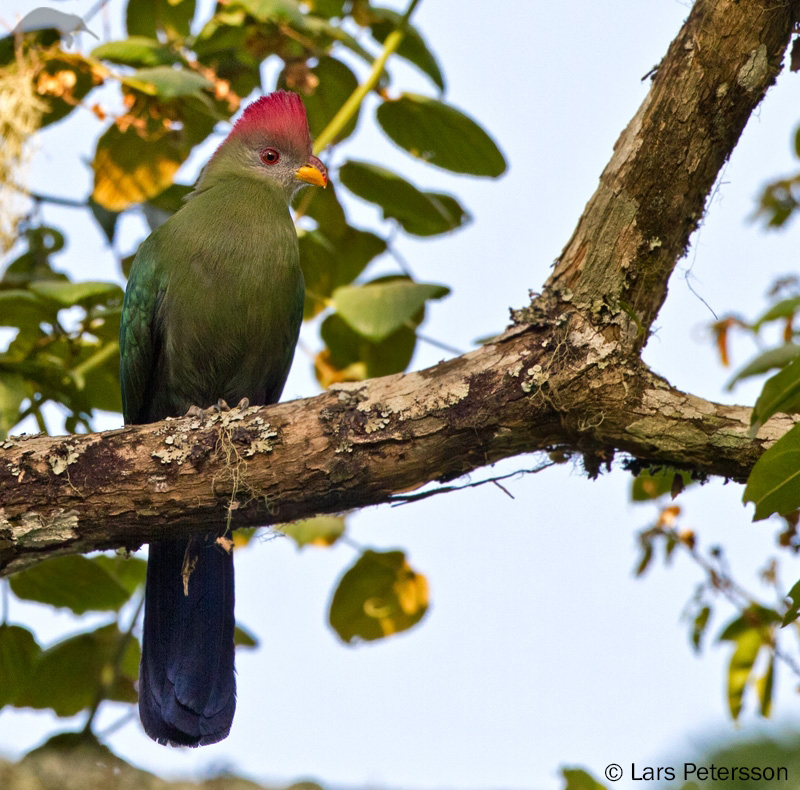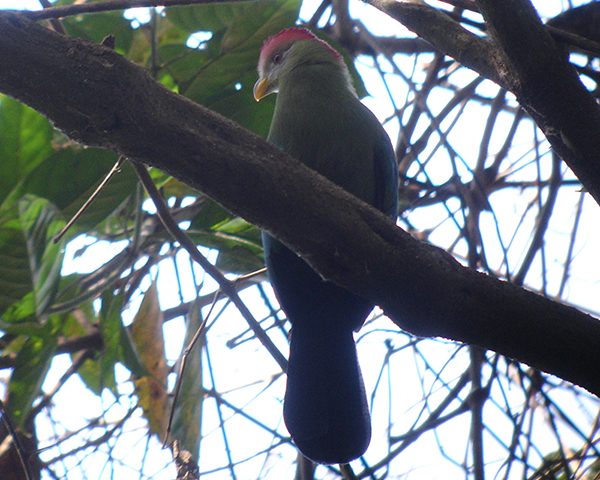About
This bird is brightly-coloured, but highly secretive.
This turaco has a distinctive red crest, yellow bill and green, red, blue and yellow plumage. However, as it is almost exclusively arboreal (tree living); staying up in the canopy, the species is usually identified by its call which can be heard from as far as a kilometre away. Bannerman’s Turaco shares its genus with 13 other species that are collectively known as the ‘typical’ or green turacos. These birds are unique in the avian world for actually producing green pigment. The green colouration of other bird species occurs due to the microscopic structure of the feathers. It spends its time foraging for fruit and berries in the canopies of the tropical montane forest of Cameroon. The Kilum-Ijim Forest in the Bamenda Highlands is one of the last remaining strongholds for the Bannerman’s Turaco. The greatest threat to the species is the loss of this area’s montane forest and hunting for its feathers. The boundaries of the Kilum-Ijim forest remain firm but forest losses still occur due to wildfires, collection of firewood, timber cutting for wood carvings, livestock grazing, and bee keeping. Population growth in villages surrounding the forest has doubled (at least) since the Kilum-Ijim Forest was established, leading to increased pressure on the forest for livelihoods and subsistence uses. The relationships between species and genera in the Musophagidae are debated and the structure of the family differs depending on the authority. The most commonly-used classification divides the family into three subfamilies, six genera and 20 species.
- Order: Musophagiformes
- Family: Musophagidae
- Population: 1,500-7,000
- Trend: decreasing
- Size: 43cm
EDGE Score
Distribution
They are endemic to Cameroon, found mainly in the Bamenda Highlands in the west part of the country, with small populations in the south-west.
Habitat and Ecology
They inhabit subtropical or tropical moist mountain forests, between altitudes of 1,700m to 2,950m.They are strictly arboreal, feeding on the fruit of tall trees, and sometimes on leaves, buds and flowers.

